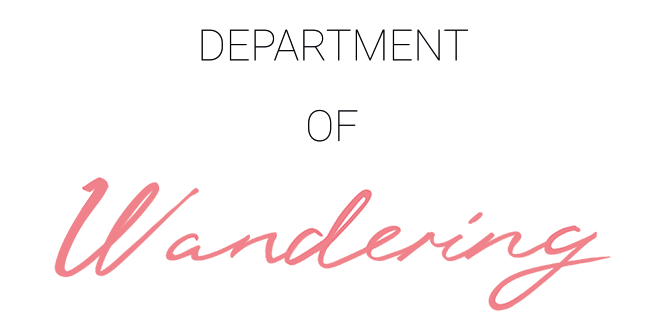
It’s a new year and a fresh calendar lays before you! Ahh, what an exciting, blank slate to behold. We all wish for this year to be our best one yet – whether personally or professionally – and setting new year’s goals or resolutions is a key way to kickstart success. Here are our best tips on how to reflect on the past and, then how to set new year’s goals.
How to reflect on the past year and plan for the one ahead:
1. Take a look at the past
You must look at the past if you want to effectively plan for the future. In addition to looking back at your whole year, ask yourself some probing questions to help you assess how the year went and what you learnt from it. These can include:
- What worked for you in the past year?
- What worked for you two years ago that you didn’t do last year?
- What didn’t work?
- How can you improve upon this or get rid of the practice for the year ahead?
- What old practices do you miss or were effective in maximizing your productivity?
Be sure to write your answers down – it will help commit the information to memory.
2. Celebrate successes
It’s so important to celebrate successes. Success is different for everyone so you must define success for yourself. Whether it’s reaching a goal at the office of x-amount of sales, reaching a blogging goal of, say, three posts per month or a certain number of pageviews, or even a goal to go call your mother more (hehe), what were you SUCCESSFUL at last year?
Now I give you permission to pour yourself a glass of wine, take yourself out to dinner or get an ice cream sundae to celebrate! Celebrating your successes is an important way of rewarding yourself for a job well done. Knowing there’s a pot of gold at the end of the rain or rainbow is great motivation to achieve your goals in the future.

3. How to set new year’s goals
This is a big one. Goals are important to write down because they’re a benchmark for what you want to achieve. It’s no use to simply think about your goals. I’ve tried this and it doesn’t work. You need to write them down.
Here’s what I suggest:
- Grab a stack of index cards.
- Start with at least two cards: one for personal goals, the other for business goals. If you’re like me and have more than one business you may need more cards. I have two businesses so I have three cards: 1) my photography business, 2) my travel website, 3) my personal goals.
- Write your general goals for the category (personal goals, let’s say) on each card. Personal goals for me are things like, ‘Clean out the kitchen pantry’, or ‘Downsize my sock drawer’. Whereas a business goal is something like, ‘Increase my website traffic by 4% for the month of February’.
- Take the list of general goals and a new stack of index cards. Write one goal per card on however many cards you need to divide them out. The first general card has become your ‘master list’ and each subsequent card will have the one, specific goal written at the top. Now, use the space on the rest of the card to write down actionable steps pertaining to how you’re going to achieve that goal.
- Add dates to the goal card. If I want to increase my website traffic by 4% for February, is my goal date for February 14th? The 28th? Writing a date will help you stay on track and keep the finish line in sight.
Feel free to do this on your computer instead if you’re more of a spreadsheet kind of person. Just open your preferred program (e.g. Microsoft Excel or Google Spreadsheets) and do the following:
- Create a list of ‘master goals’ on the first page/main tab.
- Breakout each goal per tab in the document. For example, my master list may contain 1) ‘Reach 10,000 pageviews per month’, 2) ‘Partner with one sustainable product company’, etc. So my tabs would then be each of these things.
- Within each tab, flesh out exactly how you plan to achieve that goal, just as you would on the index cards. Write out action items. Put down dates. WHEN do you want to achieve that by? Who do you need help from to achieve it?
- I recommend using different documents for personal and professional goals so it’s not overwhelming!

4. Don’t overwhelm yourself
Being realistic with your goal setting can drastically help to set yourself up for success. Don’t overwhelm yourself! If you currently have 2,000 pageviews per month or you make $50,000 a year, don’t set a goal to reach 1,000,000 pageviews per month by November, or earn a salary of $100,000 this year. Let’s be real, it’s unlikely to happen.
Can it happen in time? Yes. But if you set unreasonable deadlines, you’ll put unnecessary pressure (and stress) on yourself. This can mean that you end up giving up because no one needs more stress. I don’t want you to give up. Take baby steps (or even teenage steps) but don’t try to take giant leaps that are going to stress you out!
5. Share your goals to stay motivated and accountable
Ever hear that ‘your network is your net worth’? I rely on trusted friends and colleagues in my industry to talk through goals, hopes, dreams, and even fears. Maybe it sounds corny…but it’s true! We uplift each other and hold each other accountable. A simple, ‘How’s your Instagram account doing?’ can remind me I had a goal to gain more Instagram traffic this year. If you don’t currently have a group of uplifting go-getters surrounding you and you’re a blogger or freelancer, head over to our private Facebook group, The Department of Wandering’s Laptop Army, to connect with like-minded pros like yourself!
I recently emailed a group of three of my ‘friendors’ (friends, who are vendors) in my professional photography world to discuss goal setting. I wanted to meet up to discuss what our individual professional goals were for the year. Not only did I want to hold each other accountable but I also to get their thoughts and insight.
Other pros have suggested a number of tools that I now use on a weekly basis to help my business succeed. For example, I use a template for my website from PipDig that I found through another blogger in a private Facebook group. I also schedule my Instagram posts on Later, recommended by a friend while we were chatting about keeping up with social media planning. If my colleagues and I didn’t have open, honest conversations about these topics and help each other out I wouldn’t be where I am today. You never know if your friend/co-worker has a suggestion that could help you achieve your goal.
6. Schedule calendar reminders
I put a reminder on my calendar for the first Wednesday of every month. It says, ‘Check in on GOALS’. I dedicate this time every month to review the index cards or spreadsheet and assess where I am. Did I achieve the goal? Do I need to set more wheels in motion to get to where I want to go?
Holding yourself accountable every month helps keep you on track. After the first goals meeting we had, someone in the group even suggested getting together every three to four months to keep each other on track. I love that suggestion!
Want to improve your blog this year? Check this posts out next:
- The Best Facebook Groups for Bloggers
- 9 Reasons Why No One is Reading Your Blog (And How to Fix It!)
- Struggling With Page Views? Here’s How to Write Better Blog Post Titles
Like this post? Pin it for later!

What is one goal you have this year?



